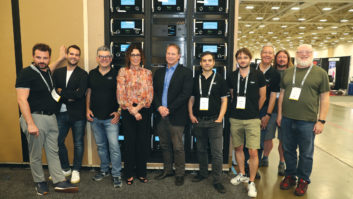
Maybe you’ve seen the chain letter email. It starts out with the dubious headline, “This Really Exists: Giant Concrete Arrows That Point Your Way Across America…” The email and its accompanying photos, both recent and historical, tells the story of how hikers sometimes run across puzzling concrete markers on the ground of the vast deserts of the American Southwest.
“What are these giant arrows? Some kind of surveying mark? Landing beacons for flying saucers? Earth’s turn signals?” the email’s original author writes as he or she presents even cooler photos of these markers covered in scrub brush and surrounded by mountain ranges. No, we learn, the arrows are the remnants of the Transcontinental Air Mail route from the early 20th Century.
According to the story, on August 20, 1920 the United States opened its first coast-to-coast airmail delivery route, just 60 years after the Pony Express closed up shop. There were no good aviation charts in those days, so pilots had to “eyeball” their way across the country using landmarks. This meant that flying in bad weather was difficult, and night flying was just about impossible.
The Postal Service solved the problem with the world’s first ground-based civilian navigation system: a series of lit beacons that would extend from New York to San Francisco. Every 10 miles, pilots would pass a bright yellow concrete arrow surmounted by a 51-foot steel tower and lit by a million-candlepower rotating beacon. (A generator shed at the tail of each arrow powered the beacon.) By 1929, mail could get from the Atlantic to the Pacific in just 30 hours, rather than a matter of weeks.
Eventually, advances in communication and navigation technology made the big arrows obsolete, and the Commerce Department decommissioned the beacons in the 1940s. The steel towers were torn down and went to the war effort, but the hundreds of arrows remain.
I was reminded of this anecdote as I was planning my trip out to Denver for this year’s CEDIA EXPO. Unfortunately Colorado is not on the old Air Mail path, so I won’t get to schedule any field trips out to the desert to look for arrows during my time off at the show. However, in the spirit of those old relics, I’m hoping more attendees that may have stayed home in recent years manage to find their way back to EXPO this time to re-engage with their peers.
We’re an industry in transition, from the products we sell to the clients we support. And while modern communication tools have changed the value some people place on traditional trade shows, coming together to exchange fascinating stories of successes and failures has always been the biggest benefit to EXPO attendees. You never know what sort of memorable anecdote you’ll take away after speaking to one of your peers at the show.








